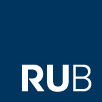Methode – Warum SeeMe?
Die Modellierungsmethode SeeMe unterstützt die Darstellung sozio-technischer und semi-strukturierter Aspekte von Kommunikations- und Kooperationsprozessen. Aktuell besteht auf akademischem Gebiet und auch in der Softwarebranche ein großes Interesse an Modellierungsmethoden. Die Schwerpunkte liegen dabei u.a. in der Integration bekannter Modellierungsansätze oder in der Bewertung der Qualität von Informationsmodellen.
Unter einer Modellierungsmethode verstehen wir ein Beschreibungsmittel, das Konzepte zur Darstellung von Phänomenen der Realität enthält. Zum Ausdruck von Konzepten wird eine Notation mit Zeichen oder Symbolen vorgesehen, deren Kombinierbarkeit bspw. in Form eines Metamodells festgelegt wird. Dazu treten Modellierungsregeln oder Konventionen und i.d.R. methodische Hinweise zum Aufbau von Modellen, die Anleitung beim fachlichen Entwurf von Modellen und beim Layout enthalten. Zur Erzeugung, Veränderung und Betrachtung von Modellen dienen computergestützte Modellierungs- und Betrachtungswerkzeuge. Die Entwicklung von SeeMe geht auf Anforderungen an Modellierungsmethoden aus dem Requirements Engineering und der Beschreibung sozio-technischer Systeme sowie auf eine Analyse vorhandener Modellierungsmethoden zurück. Dazu zählen die UML zur Unterstützung objektorientierter Methoden, die erweiterten ereignisgesteuerten Prozeßketten aus ARIS, Erweiterungen von Entity-Relationship-Modellen, Notationen zur Verhaltensmodellierung wie Statecharts und Petri-Netz basierte Ansätze wie FUNSOFT-Netze und RFO-Netze.
SeeMe legt ein besonderes Gewicht auf die Modellierung „nasser“ Information zur Unterstützung partizipativer Software-Entwicklung und Einführung und enthält eine Reihe speziell für diesen Zweck entwickelter Konzepte
Einen einführenden Vortrag zum Thema finden Sie hier (Vortrag als ZIP-File, 45KB)
Details zu SeeMe – Lehr- und Lernmaterialien
„Seeme in a nutshell“(PDF) gibt eine gute Einführung in die Modellierung mit SeeMe und erklärt die wesentlichen Elemente der Notation (PDF, englisch)
Eine Kurzübersicht der wichtigsten Notationselemente sind auf einem Plakat zusammengefasst, dass als Kurzreferenz dienen kann: SeeMe-Plakat (PDF, 29 KB)
Berichte aus der Praxis
Herrmann, Thomas; Hoffmann, Marcel; Loser, Kai-Uwe; Moysich, Klaus (2000):
„Semistructured models are surprisingly useful (PDF-File, 104 KB)“
Designing Cooperative Systems. Proceedings of Coop 2000. (Sophia Antipolis, France, May 2000), pp. 159-174
Herrmann, Th.; Loser, K.-U.; Moysich, K. (2000):
„Intertwining Training and Participatory Design for the Development of Groupware Applications (PDF-File, 417 KB)“
Proceedings of the PDC 2000: Participatory Design Conference. Nov. 28 – Dec.2, New York. CPSR, Palo Alto. 2000.
Weitere Publikationen zu SeeMe
Kai-Uwe Loser (2005): Unterstützung der Adoption kommerzieller Standardsoftware durch Diagramme. Dissertation, Universität Dortmund, 13.10.2005, eldorado
Kunau, Gabriele (2006): Facilitating Computer Supported Cooperative Work with Socio-Technical Self-Descriptions. Dissertation, Universitätsbibliothek Dortmund, eldorado
